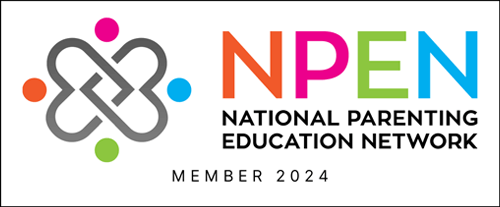by Dr. Jen O’Ryan
Picture a typical gathering of friends over the holidays. Laughter, music, conversation, kids running around. Now picture one of the younger kiddos enthusiastically running up to her mom and announcing that two men are kissing in one of the framed pictures down the hall. If you had spent this evening at my home, what happened…erm, I mean ‘would have’ happened is that the room goes silent except for the faint tones of “Baby, it’s cold outside” playing in the background. Then everyone would turn and look at me expectantly. I wish I could say, for the first time.
So what does this mean, other than I have questionable taste in holiday music? For some parents, the idea of discussing sexual orientation with their children, especially young children, carries with it a certain degree of uncertainty that isn’t always there when talking about heterosexuality. From an outside perspective, it seems people tend to think about homosexuality and bisexuality in terms of various sex acts; where heterosexuality is framed more around dating, courtship, and relationships. Very few of the parents I’ve spoken with are concerned about how to introduce Mr. and Mrs. Jackson to their young children without it spiraling into a complex speculation of how the couple engages in physical intimacy. When presented with introducing a gay or lesbian couple, the sexual aspect of their relationship is suddenly a big concern for adults trying to “protect” children from being confused.
This fear of confusing children and attempt to prevent exposure to homosexuality is based largely on an assumption that a heterosexual orientation is the default, or worse…”normal”. Normal is an extremely loaded word in terms of sexuality and sexual orientation. It’s as though children are presumed to be inherently heterosexual until something magical happens during adolescence or adulthood, and they then “become” lesbian, gay, bisexual, queer, or however they choose to identify.
Turns out, not so much. It’s very common for lesbian, gay, and bisexual individuals to become aware of their orientation during childhood. At this stage of development, same-sex attractions are not overtly sexual in nature. They are the same expressions of schoolyard crushes that are experienced by heterosexual children. Part of talking to your child about sexual orientation is not assuming they are straight (I’ll give you a minute to process that). Maybe they are, maybe they aren’t…it doesn’t matter, the point is to make space for them regardless. So instead of telling your young son that someday he’ll have a girlfriend, simply refer to it as dating. Instead of asking your teenage niece if she has a boyfriend (which is already kind of invasive for some adolescents), ask if she is seeing anyone. Taking yourself out of the ‘hetero as a default’ lens is the first step in creating an inclusive language to use with your child.
But let’s get back to the point of this article, which is how to include sexual orientation when talking to your kids about sex, love, and relationships.
First, don’t over complicate things. Children, like my friend’s daughter, are not looking for a history of gender and sexuality as a mostly social construct; she wanted to know about the picture of two men kissing. Tell her (correctly) that it’s a picture from their wedding day. The couple is celebrating a very happy moment after being married. The end. Unless there are other questions, a very likely possibility among six year olds. Answer the question that’s being asked, with age-appropriate terms (oh, honey, they’re newly married! Like mommy and daddy or grandma and grandpa are married).
If the child is older, be prepared to possibly field more complex questions around sexuality. Their questions could be related to natural curiosity, or the youth may be questioning their own sexuality. Regardless of the motivation behind questions, consider the topic of orientation as part of a larger conversation around sexual development and building skills for healthy relationships. Conversations you’ve hopefully been having with your child since their early years. No one is expecting you to be an expert, but do reach out and find resources to fill in gaps if asked something that you don’t know how to answer. Educate yourself, so you can better educate your child. And most importantly, keep those lines of communication open. As a parent or caring adult, trust me, kiddos are looking to you for cues.
Dr. Jen O’Ryan has a PhD in Human Behavior and researches environmental factors that contributed to healthy development for LGBTQ youth. She helps parents and other folks become advocates for LGBTQ kids.



